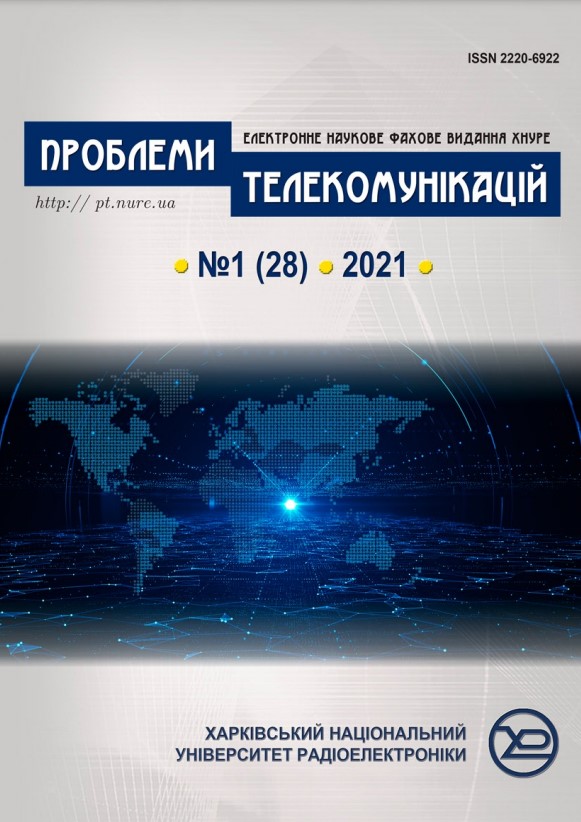Method of calculating the optical fiber geometric parameters with multiple cores
DOI:
https://doi.org/10.30837/pt.2021.1.02Abstract
The paper considers a simplified method for calculating the geometric parameters of an optical fiber with many cores. Such a fiber allows for an increase in the throughput of fiber-optic transmission systems by the method of spatial multiplexing. The proposed technique is based on the concept of light energy distribution in the mode spot and the allowable level of mutual influence between different cores. Algorithmic and software that implements the proposed technique has been developed. A comparative analysis of the triangulation and rectangular structure of fiber with many cores was performed. The technique considers the influence options from the nearest cores and the far layers cores. The analysis of the stability of the received results to minor deviations of actual parameters from the accepted ones in the model is executed. The technique is resistant to minor deviations in the shape of the cores from the circular and to small bends of the optical fiber. The method’s theoretical basis is used representations of wave optics and relatively simple representations of geometric optics. The obtained formulas are quite simple to analyze. Therefore, the obtained results can be offered for fast analysis of complex geometric structures of an optical fiber with many cores. Direct measurements or more complex theories compared the obtained results with the known estimates. It is shown that more than 100 cores can be concentrated in a fiber with a diameter of 200-400 μm, taking into account the typical values of noise in real fiber-optic transmission systems. That is, with a slight increase in the size of the optical cable, you can increase the total transmission rate by more than 100 times.
Downloads
Published
Issue
Section
License

This work is licensed under a Creative Commons Attribution-NonCommercial-ShareAlike 4.0 International License.
Authors who publish with this journal agree to the following terms:- Authors retain copyright and grant the journal right of first publication with the work simultaneously licensed under a Creative Commons Attribution License that allows others to share the work with an acknowledgment of the work's authorship and initial publication in this journal.
- Authors are able to enter into separate, additional contractual arrangements for the non-exclusive distribution of the journal's published version of the work (e.g., post it to an institutional repository or publish it in a book), with an acknowledgment of its initial publication in this journal.
- Authors are permitted and encouraged to post their work online (e.g., in institutional repositories or on their website) prior to and during the submission process, as it can lead to productive exchanges, as well as earlier and greater citation of published work (See The Effect of Open Access).

